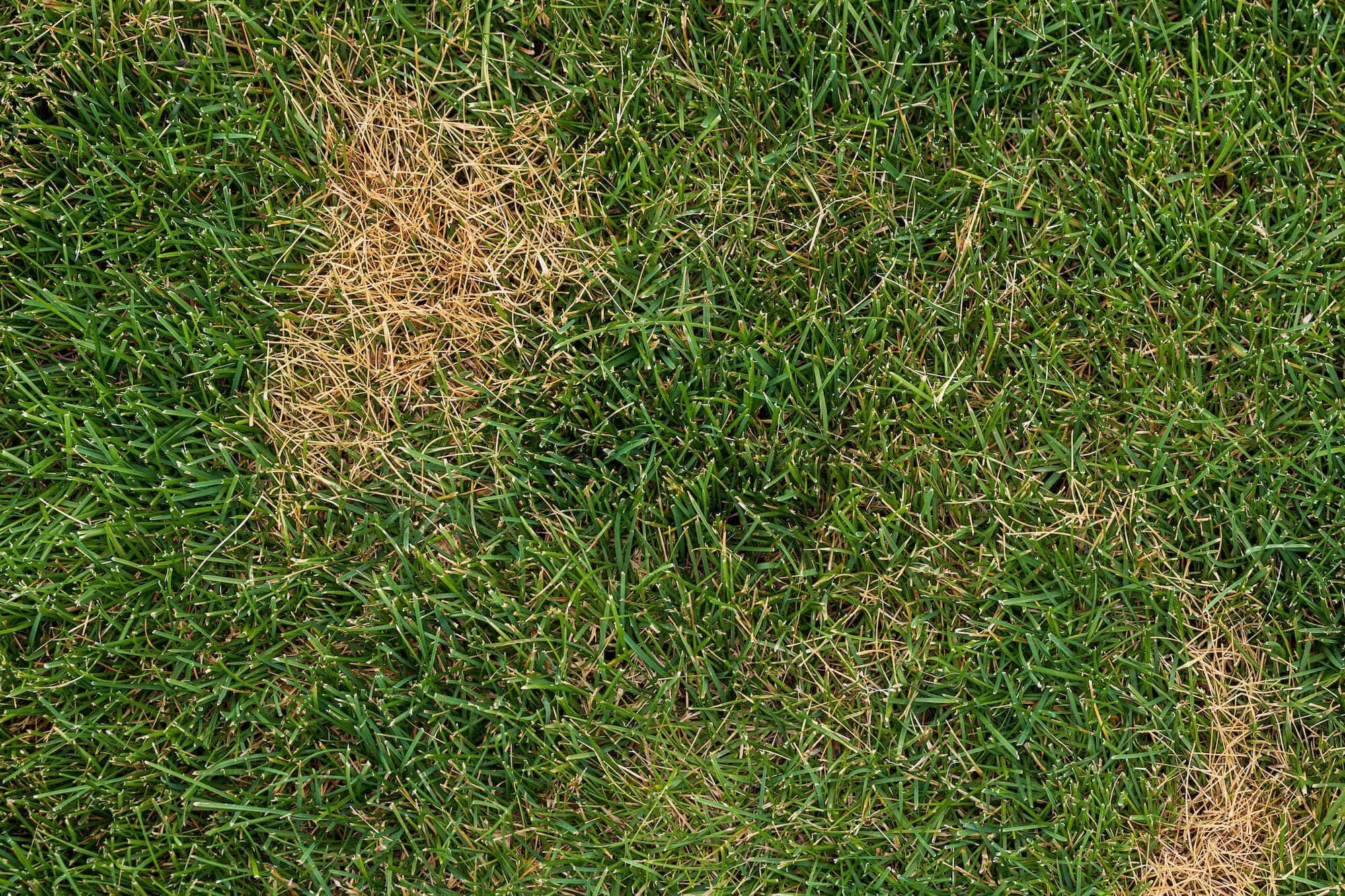Why is My Sod Turning Yellow? How to Turn it Green
Sod is a great way to get a quick, green lawn. However, if sod is not properly cared for, it can turn yellow. Sod is usually beautiful. It’s lush green and can turn any drab yard into a beautiful oasis. Sod is also expensive – which means you want to take care of it! In this comprehensive guide, we will discuss everything you need to know about sod care. We’ll cover why sod turns yellow, how to turn it green again, and how to keep your sod looking amazing for years to come!

Factors contributing to sod-turning yellow
Sod is a living thing, and just like any other plant, it can get sick. The most common reason for yellowing sod are:
Lack of nitrogen
This can happen when Sod is over-fertilized with phosphorus and potassium but not nitrogen. While all three are important nutrients for sod, nitrogen is what gives sod its beautiful green color. If you think your Sod may be turning yellow due to a nutrient deficiency, the first step is to test your soil. You can buy a soil testing kit at any garden center or home improvement store. Once you know what nutrients are lacking in your soil, you can amend it accordingly.
Lack of water
Sod needs at least an inch of water per week, and more in hot, dry weather. If sod is not getting enough water, it will start to turn yellow. Make sure you’re watering sod deeply and evenly if sod is only getting a light sprinkling. The roots won’t be able to absorb all the moisture they need.
If you think your sod may turn yellow because of a lack of water, the first step is to check your irrigation system. Make sure all your sprinkler heads are functioning properly and that sod is getting evenly watered. You may also need to adjust your watering schedule. – during hot, dry weather, sod may need to be watered more than once a week.
Pests
Certain pests can cause sod to turn yellow. The most common sod-damaging pests are grubs, chinch bugs, and sod webworms.
- Grubs: Grubs are small, white larvae that feed on sod roots. If grubs are present in sod, the first step is to treat Sod with an insecticide. You can find grub control products at any garden center or home improvement store.
- Chinch Bugs: Chinch bugs are small, black insects that feed on sod by sucking the juice out of the leaves. If chinch bugs are present in Sod, the first step is to treat sod with an insecticide. You can find chinch bug control products at any garden center or home improvement store.
- Sod Webworms: Sod webworms are small, brown caterpillars that feed on sod by eating the grass blades If sod webworms are present in Sod, the first step is to treat Sod with an insecticide. You can find sod webworm control products at any garden center or home improvement store.
These pests attack sod by feeding on the roots, which can kill sod and cause it to turn yellow. If you think your sod may turn yellow because of pests, the first step is to inspect the sod for signs of damage. Look for brown patches, wilting leaves, or holes in sod. If you see any of these signs, the next step is to treat Sod with an insecticide.
Diseases
Certain diseases can cause sod to turn yellow. The most common sod-damaging diseases are brown patch, dollar spot, and red thread.
- Brown Patch: Brown patch is a fungal disease that attacks sod by causing brown patches to form on the leaves. If brown patch is present in Sod, the first step is to treat Sod with a fungicide. You can find brown patch control products at any garden center or home improvement store.
- Dollar Spot: Dollar spot is a fungal disease that attacks Sod by causing small, silver-dollar sized spots to form on the leaves.
Red Thread: Red thread also is a fungal disease that attacks Sod by causing red threads to form on the leaves.
These diseases attack Sod by feeding on the roots, which can kill sod and cause it to turn yellow. If you think your Sod may turn yellow because of a disease, the first step is to inspect. If you see any signs of diseases, the next step is to treat Sod with a fungicide.
How to turn sod green again
If sod is already yellow, there are a few things you can do to turn it green again.
Fertilize with nitrogen.
The first step is to fertilize sod with nitrogen. This will give sod the nutrients it needs to turn green again. Be sure to follow the directions on the fertilizer carefully. You don’t want to over-fertilize and damage sod.
Water deeply and evenly.
Sod also needs plenty of water to turn green again. Water sod deeply and evenly, making sure the roots get plenty of moisture. Water deeply but infrequently. Sod should be watered deeply but infrequently to encourage vigorous root growth. Watering too often can cause shallow roots that are more susceptible to drought and disease. A good rule of thumb is to water sod for about 30 minutes, three times per week.
Aerate compacted soil
Sod can turn yellow when the soil it’s growing in is too compacted. Aerating the soil will help to improve drainage and air circulation, which can encourage a deep green color in your sod.
Fertilize regularly
Fertilizing sod regularly will help to ensure a deep green color. Look for a fertilizer with a high nitrogen content and apply it according to the manufacturer’s instructions.
Mow at the proper height
Mowing sod at the proper height is important for a deep green color. The general rule of thumb is to mow Sod when it’s about one-third taller than its recommended height. This will vary depending on the type of sod, so be sure to check the manufacturer’s instructions.
Apply a pest control product if needed
Sod can also be damaged by grubs, which are the larvae of beetles. Sod that is already yellow may not be revived. If you suspect your sod has been damaged by grubs, lift a piece of sod to check for their presence. Apply a grub control product if needed.
Sod that is already yellow may also have been damaged by chinch bugs. These pests feed on the sap of grass plants, causing them to turn yellow and eventually die. Chinch bugs can be difficult to control, so it’s best to consult with a lawn care professional if you think your sod has been infested.
Pathogens Control
If Sod has been infected with Pythium(Fungi), the best course of action is to apply a fungicide. Follow the directions on the product carefully and apply it evenly over the affected area.
Bacterial blight can also cause sod to turn yellow. This disease is caused by bacteria that live in the soil and attack Sod through the roots. Bacterial blight can be difficult to control, so it’s best to consult with a lawn care professional if you think your sod has been infected.
There are several viral diseases that can cause sod to turn yellow. These diseases are spread by insects and can be difficult to control. Controlling pathogens is a sure way to restore sod green.
Sometimes you’ll just need to buy new sod. Here you can compare sod prices.
Sod maintenance
- Sod maintenance is important for keeping sod healthy and green.
- Test your soil regularly and amend it as needed.
- Water sod deeply and evenly.
- Inspect Sod regularly for signs of damage
- Remove any debris on top of the sod
- Water deeply and regularly
- Fertilize according to the manufacturer’s instructions
- Aerate compacted soil.
Frequently Asked Questions
Can pet urine cause sod to turn yellow?
Yes, pet urine can cause sod to turn yellow. The nitrogen in urine can burn the grass, causing it to turn yellow. If you have pets, be sure to keep them away from Sod until it has recovered.
Is sod easy to care for?
Yes, sod is easy to care for if you follow these simple tips. Sod does require more water than other grasses, so be sure to water it deeply and evenly. Sod also benefits from regular fertilization and soil testing.
Can petrol mowers cause the sod to turn yellow?
No, petrol mowers will not cause Sod to turn yellow. However, it’s important to make sure the mower is properly maintained and sharpened. A dull mower can damage sod, causing it to turn yellow. However, if you spill petrol on the lawn, then it is advisable to clean the spillage up as quickly as possible and flood the area with water to dilute the fuel. Then add an absorbent product to collect the fuel.
Conclusion
So, hopefully this article has put your mind at ease and given you a way to turn that yellowing sod into a green, thriving lawn. As with many gardening issues, there are a variety of factors that can cause your turf to yellow. A lack of nutrients or even dry, dead soil can turn your once lush green landscape into patchy yellow grass. But with the right care and maintenance, you can keep your lawn looking its best year-round.







